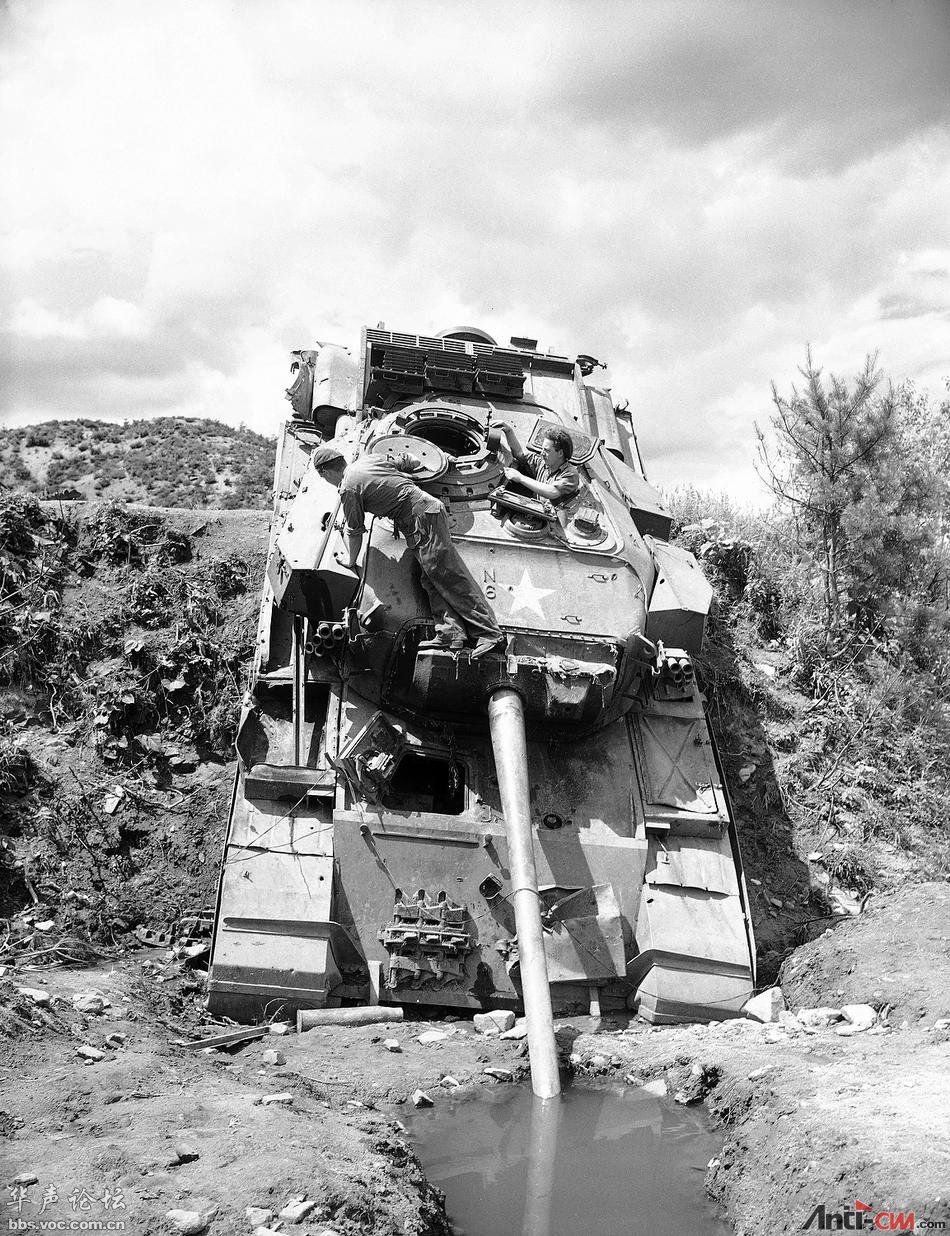|
|

楼主 |
发表于 2010-6-30 09:17
|
显示全部楼层

This British Centurian tank resembles an Elephant drinking water as it rests at a crazy angle, its gun barrel sticking into a waterhole on a Korean roadside north of Seoul on June 22, 1951. Working to salvage usable parts are Lance Corp. Douglas Bone, left, of Basings, Hampshire, Eng., and Trooper Ronald Rodda, Sunderland County, Durham, Eng. (AP Photo/E.N. Johnson |
|